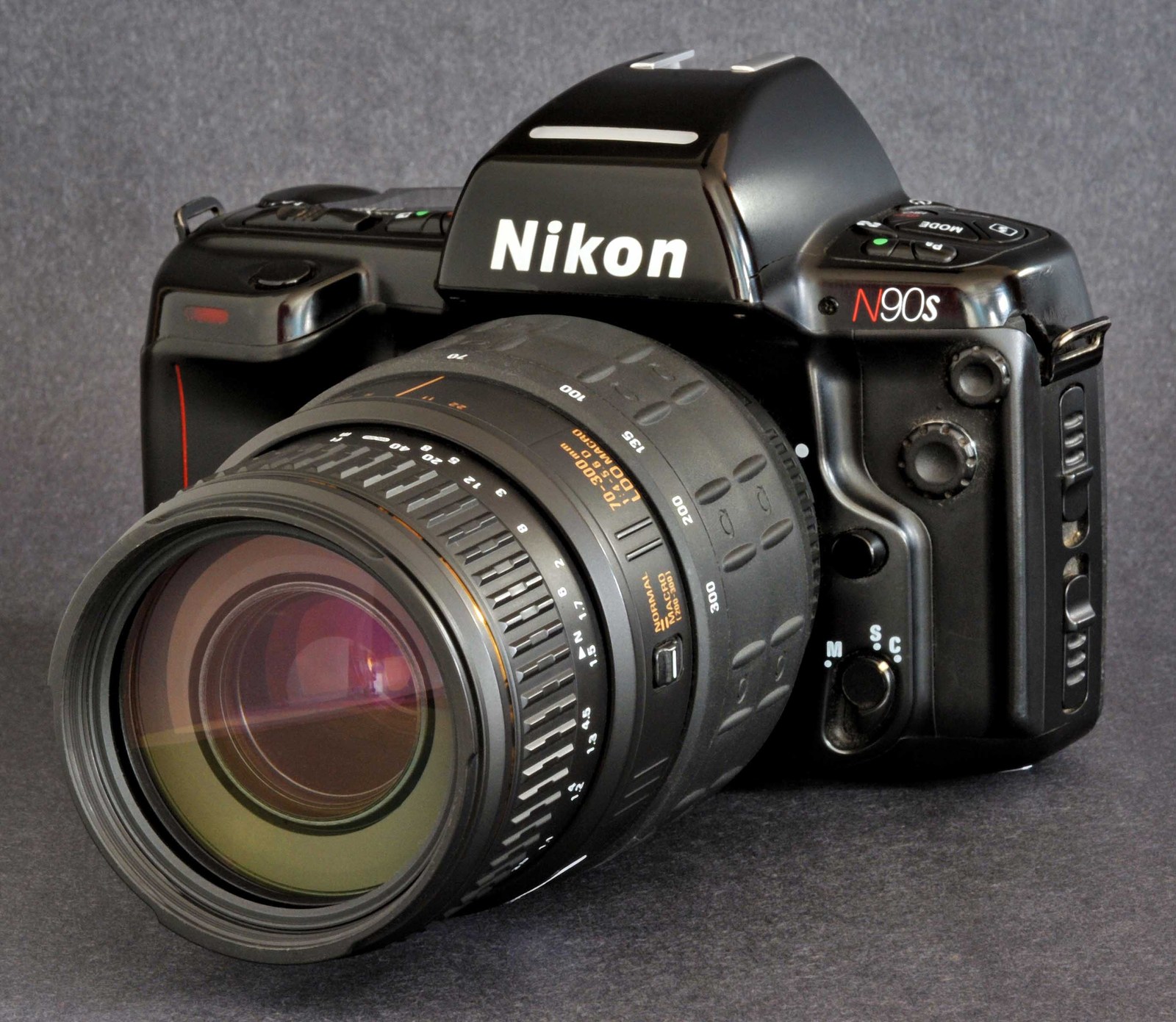


But also if you drop the batteries out and leave it in Auto it shoots at 1/1000.

You can use it quasi-manually in the flash mode at 1/90. Surprisingly robust, it actually makes a good back up body. Snorted at in its day but now felt a somewhat sleeper classic. It’s the first Nikon to use (a little) polycarbon plastic.
Nikon film camera 35mm manual#
Clearly the ladies not being capable of using a marginally heavier, bulkier camera that could also do without manual modes. This is the smallest lightest Nikon film SLR body. Literally sold on the premise as one for the ladies. If Nikon launched this camera the same way today the company would have had its reputation shredded. Image © Peggy Marsh and used with kind Permission But for me, it places it behind the other 3 manual focus cameras on the list. If you can live with the flaws it’s fine. You can mount and use almost any F mount lens from the AI revision until AF-P lenses. The exceptions are grand total of 3 CPU manual focus lenses that Nikon made. Stick on a manual focus AI or AI-S lens and you loose the matrix metering.

Problem is this camera provides the the best support to AF lenses not manual focus. You can completely override the DX and you do get a cable point. It is a typical early 90’s plastic bodied LCD controlled camera with motordrive & DX coding. They also tore out the built in flash but at least you can use compatible speedlites. Essentially a F-601 (N6006) but with the AF module removed and a manual focus screen. It is the successor to the Nikon FA with it’s legendary matrix metering. But is also is one of their most flawed cameras missing its entire raison d’être. On one level this is the most advanced manual focus SLR Nikon has ever produced. Jim Grey has just reviewed this on his blog. It would be followed by the F60 which features later but again uses the same chip.
Nikon film camera 35mm series#
I prefer the older analogue dials of the F-401 series but this is a fine camera with incremental improvements over its predecessor. It’s broadly fine in use but to do things like a AEL lock requires some dexterity. But don’rt expect a mode or command dial. With the PSAM and scene modes we’re used to on modern cameras. What you do get is an updated control layout. But it’s worth noting that module came from the F4. It actually shares the same single focal point 6 zone matrix metering AM200 module. So no AF with the newer AF-I or AF-S lenses (although they will meter and manually focus). But unlike the F90 and F70, it could only use the older slower AF-D autofocus system. The Nikon F50 launched as their budget model after the comeback camera (F90 aka N90). Nikon need a camera to comeback against this onslaught and use their new faster AF-I lenses. Their EOS cameras outclassed Nikon in Autofocus speed and accuracy. Rivals Canon stole a massive leap by ditching their legacy mechanical mount. Image © Jim Grey and used kind Permissionīy the early 90’s Nikon had a problem. This makes Nikon a great long term start for someone wanting to get into 35mm SLR film photographyĪfter this top 10 I’ve included a brief guide to Nikon F mount lens technology in case you are wondering what all the terms mean. At least 2 of the cameras on this list will fully work with most modern lenses some others on the list will function but without the autofocus. This means vintage film era lens, you can buy can still be used with many (to varying degrees) Nikon dSLRs and Mirrorless cameras sold today. on their dSLR as on that original Nikon F*. Nikon are the only camera maker that have stuck with the same mount*. In fact 2 of the bodies I’ve personally bought for a quid or less and quite a few other for not much more. For those of you on a budget there are several bodies you can buy for under £20GBP. Arguably the pinnacle of film camera evolution.Īnd whilst buying a classic Nikon film body isn’t exactly cheap. They were the last company making fully fledged high end SLR film cameras only pulling out from the market last year with the demise of the Nikon F6. Their 1959 Nikon F, very much set the standard and Nikon’s build quality means you can still pick up and use a 1950’s Nikon F today. Nikon did not invent the SLR but they perhaps are the company that are synonymous with it. Image by Dnalor 01, CC BY-SA 3.0, via Wikimedia Commons Nikon F with original finder and Nikkor -S 50mm 1:1.4.


 0 kommentar(er)
0 kommentar(er)
